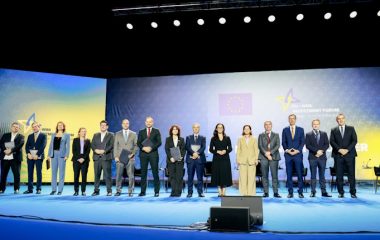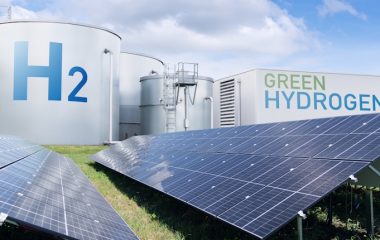
Photo: Twitter.com/siemensgamesa
Siemens Gamesa Renewable Energy has put into operation the world’s first electrothermal energy storage system (ETES), which makes it possible to store large quantities of energy cost-effectively, decoupling electricity generation and use. The innovative storage technology is key to the next step in the energy transition, according to a press release from the Spain-based wind turbine manufacturer and wind power services provider.
Siemens Gamesa’s pilot heat storage facility, which was ceremonially opened on June 12 in Hamburg, Germany, contains around 1,000 metric tons of volcanic rock as a medium to store electricity drawn from the grid at 750°C. When demand peaks, the electrothermal energy storage system uses a conventional steam turbine to convert the stored energy back into electricity.
The pilot plant can store up to 130 MWh of thermal energy for a week, but Siemens Gamesa plans to use its storage technology in commercial projects and scale up the storage capacity and power.
The goal is to store energy in the range of several gigawatt hours (GWh) in the near future. One gigawatt hour is equivalent to the daily electricity consumption of around 50,000 households.
New technology to drive renewable energy expansion and energy transition
The new technology, which reduces costs for larger storage capacities to a fraction of the expenditure needed for battery storage, presents an elementary building block for the further expansion of renewable energy and the success of the energy transition, according to Markus Tacke, CEO of Siemens Gamesa.
The innovative technology also makes it possible to convert decommissioned conventional power plants into green storage facilities (second-life option), according to Siemens Gamesa’s website.
German power utility company Hamburg Energie is one of the partners in the project and is responsible for marketing the stored energy on the electricity market. The project is funded by the German Federal Ministry for Economic Affairs and Energy, according to the press release.
Siemens Gamesa was created in a merger between Germany’s Siemens Wind Power and Spain’s Gamesa in 2017, according to the company’s website.









Be the first one to comment on this article.